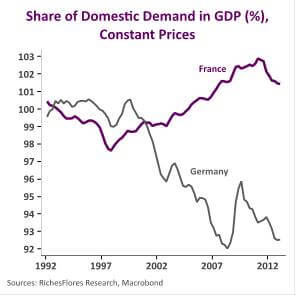Has the time come for commodity markets to increase again?
After three years of stagnation, a growing number of investors have been tempted to think so in recent weeks. This renewed interest is hardly surprising given that equity markets are brimming with confidence in the belief that the global economic picture is gradually improving.
Our contrarian economic outlook is naturally quite skeptical of a recovery in global commodity prices. Despite geopolitical and weather-related stress, the international environment runs the risk of suffering a broad downturn amid rampant disinflation and ongoing growth disappointments. Against this backdrop, it would be gold that stands the most likely chance of increasing in value…assuming that long-term real interest rates weaken.
Contents
1. Unusually stable prices since 2012
2. Energy bills generally manageable…
3. … thanks to falling consumption
4. Keeping an eye on agriculture…
5. Precious metals: end of QE could trigger a rise…

